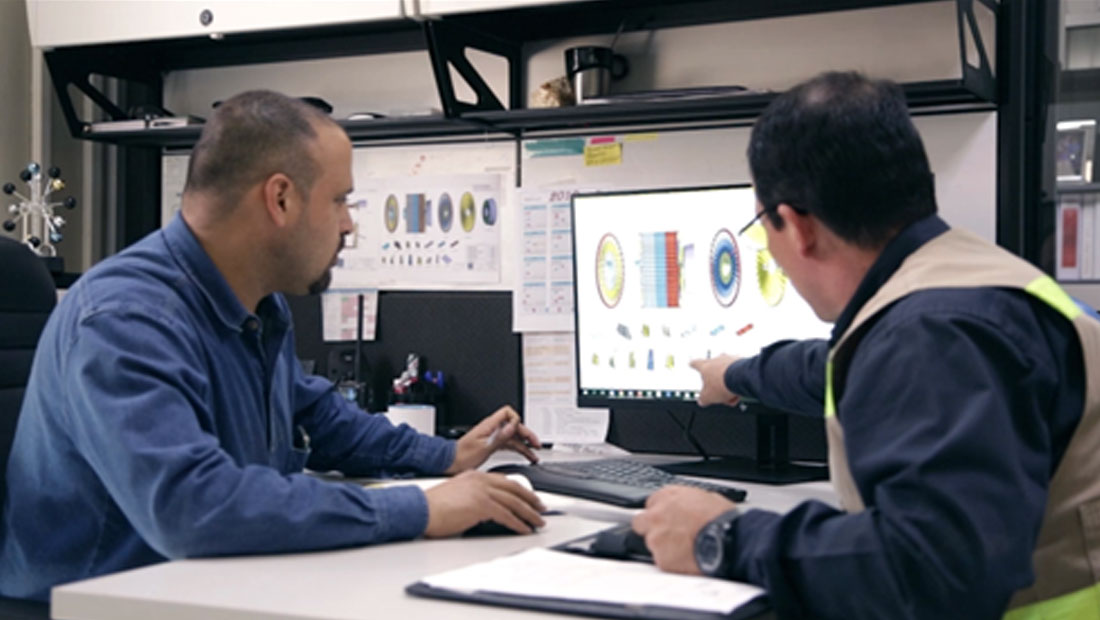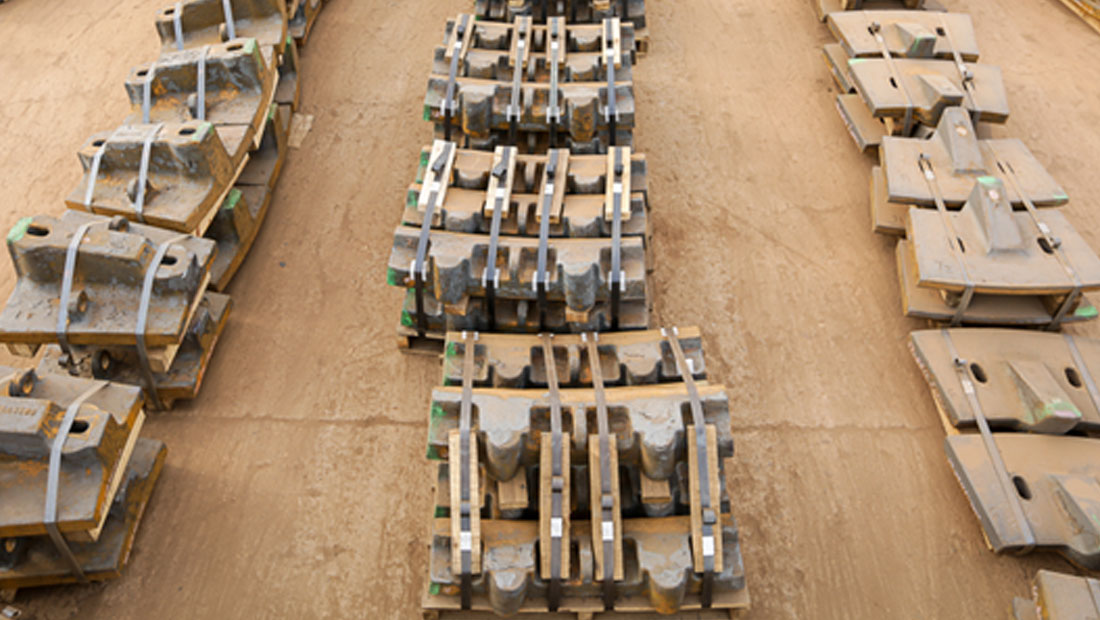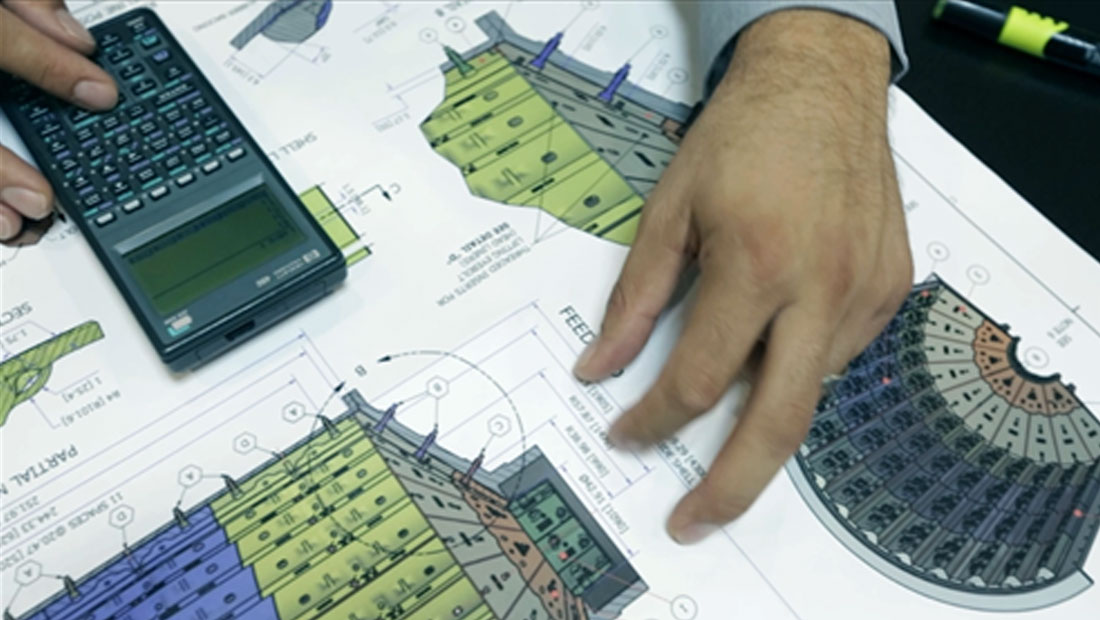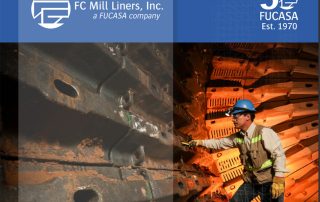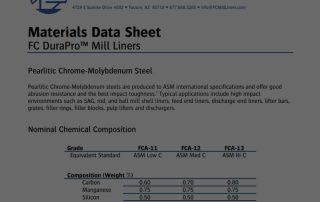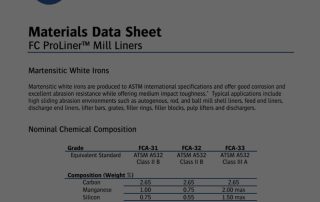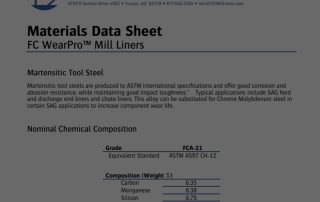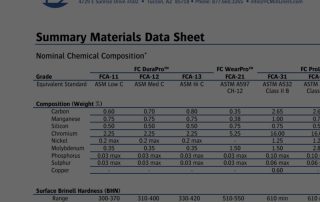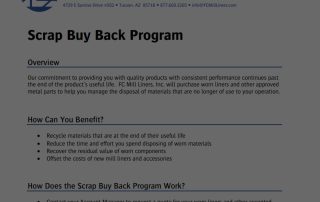The Top 5 Myths about Grinding Mill Liners Debunked
The Top 5 Myths about Grinding Mill Liners Debunked
If you rely on SAG/AG, ball, or rod mills for your mine operations, you know that mill liners are a critical part of the grinding process. But you might be making assumptions about their procurement, use, and disposition that are costing you time and money.
Read on to learn more as we shed light on the top 5 myths about grinding mill liners.
Myth #1: Liner Material Selection Doesn’t Matter That Much
Appropriate alloy selection is critical to obtaining desired mechanical properties for iron and steel mill liners that best fit the operating conditions of a grinding mill and deliver performance that supports the mining operation’s production goals.
The desired mechanical properties of white iron and chrome-moly steel liners depend highly on appropriate alloy selection, effective metal casting processes, and precision thermal treatments. To select the best alloy, it is important to understand the mill operating conditions and choose an alloy that will balance hardness and tensile strength. The right alloy will improve durability and abrasion resistance, extending wear life.
Good metal casting processes ensure correct dimensions for good fit and high quality for desired mechanical properties. Precision heat treatment improves the strength and wear resistance of the metal casting.
Myth #2: Mill Liners All Perform the Same
All mill liners do not perform the same. The grinding efficiency of a SAG, AG, ball, or rod mill is highly dependent on the design and performance characteristics of the liners.
Good alloy selection and quality production processes can extend operating life. Good profile design can improve grinding efficiency and also extend wear life.
Bottom line: you can reduce your grinding costs per milled ton using liners that produce better grinding and last longer.
Myth #3: Mill Liners Can’t be Recycled
Worn iron and steel liners can be recovered and reused to produce new liners. Mill liners made with non-metallic materials may not be easily recyclable.
You can recover value from your worn mill liners if your mill liner supplier buys them back.
Consider mill liner supplier buyback programs as part of the entire lifecycle of your mill liner supply chain.
Myth #4: Large Companies Make More Reliable Suppliers
Large companies try to be all things to all customers, often losing specialization and expertise, particularly in the custom world of mill liners.
A specialized mill liner supplier counts on in-depth expertise to reliably deliver high-quality, application-specific products that increase mill efficiency and lower overall grinding costs.
Delivery times of larger companies tend to extend out when demand increases, challenging your supply chain. And if you need fast response times for urgent orders, larger companies tend to fall short.
Unreliable deliveries can leave you unprepared for scheduled changeouts. This means either operating with less efficient mill output or worse, stopping the mill altogether until new liners are delivered.
When evaluating mill liner suppliers, consider the benefits of working with a specialized company to deliver better quality, performance, and supply chain reliability.
Myth #5: Price is the Most Important Decision Factor
Mill liners are typically priced by weight – this myth completely ignores other factors that can significantly impact your grinding costs such as alloy selection, profile design, and long lead times.
Inappropriate alloy selection can result in poor wear performance requiring more frequent liner changeouts. Inadequate profile design can reduce the grinding efficiency and output of the mill. Long lead times can prompt some operations to inventory multiple liner sets, increasing carrying costs and unnecessarily tying up cash.
When evaluating mill liner solutions, consider all the factors that influence your grinding costs to make the best financial decision for your operation.
Conclusion
A top mill liner supplier will work with you to tailor the material and design for your specific operating conditions and performance requirements. Moreover, consistent, reliable deliveries will ensure that you have liners on the ground when you need them, avoiding the need to tie up cash and warehouse space.
FC Mill Liners, Inc. specializes in the expert design, manufacturing, delivery, and continuous improvement of iron and steel mill liners. We strive to be a reliable supply chain partner, adjusting our designs to last longer and perform better, and delivering what we promise, when we promise.
Do you have questions about our mill liners, or would you like a quote? Click here to request more information now.
Continue Reading
Proper selection of mill liners holds significant importance, considering the notable drawbacks associated with certain designs.
Proper selection of mill liners holds significant importance, considering the notable drawbacks associated with certain designs.
Proper selection of mill liners holds significant importance, considering the notable drawbacks associated with certain designs.

